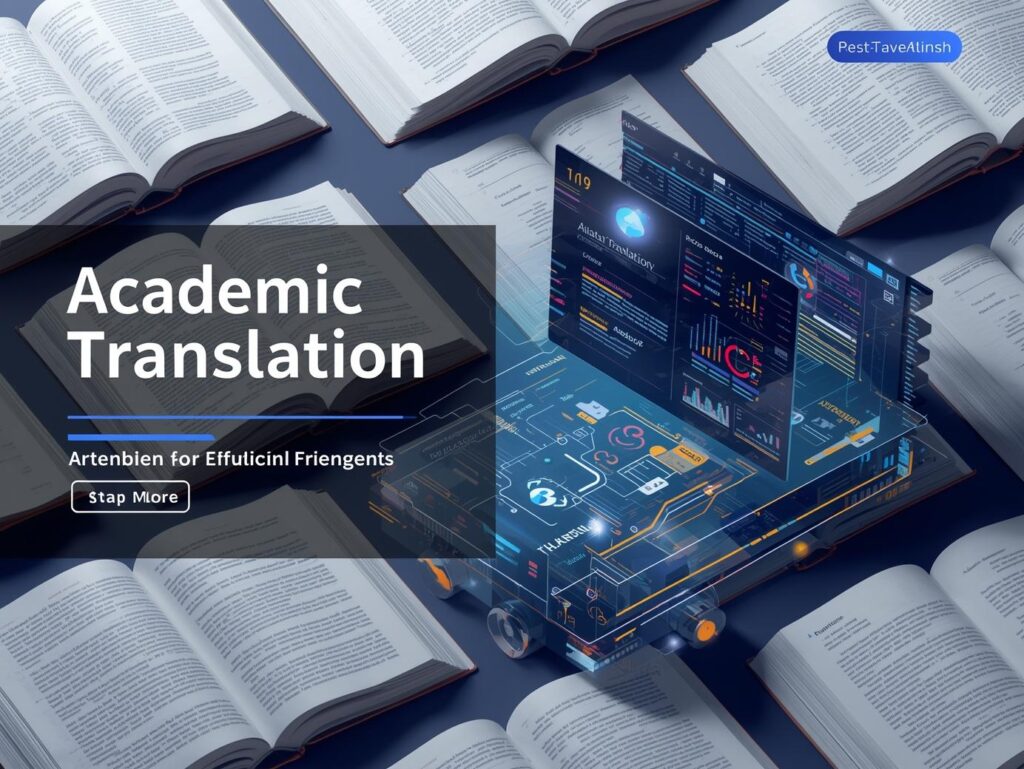Academic Translation: Bridging Language Barriers in Scholarly Communication
Academic translation is a specialized field within language services that focuses on converting scholarly content across languages while maintaining the integrity, accuracy, and nuance of the original material. Its significance has grown exponentially with the globalization of research, fostering international collaboration, knowledge dissemination, and educational exchange. Unlike general translation, academic translation demands a profound understanding of subject matter expertise, terminological precision, and adherence to disciplinary conventions, making it a complex but essential component of scholarly communication.
The Role and Importance of Academic Translation
Academic translation serves as a conduit for sharing research findings, educational resources, and scholarly debates across linguistic boundaries. It enables researchers from diverse backgrounds to access and contribute to global knowledge pools, thus promoting inclusivity and diversity in academia. For instance, translating pivotal studies from non-English languages broadens the reach of influential research, which might otherwise remain confined within regional communities. Additionally, academic translation supports institutional collaborations, international conferences, and joint publications, which are fundamental to advancing scientific progress. According to a report by the European Science Foundation, approximately 80% of research publications are in English, but a significant volume of valuable scholarship is produced in other languages, emphasizing the need for high-quality translation to democratize access to knowledge.
Challenges in Academic Translation
Despite its importance, academic translation faces numerous challenges. The foremost is the complexity of accurately conveying specialized terminology and concepts. Scientific, technical, and medical texts often contain jargon, symbols, and data that require precise translation to preserve validity. Misinterpretation of terms can lead to misinformation, impacting subsequent research or clinical practices. Moreover, disciplinary conventions influence how ideas are expressed; for example, the structure of a research paper varies across fields such as humanities, social sciences, and STEM disciplines. Cultural nuances also play a role, as idiomatic expressions or region-specific references may not have direct equivalents, necessitating careful adaptation rather than literal translation. Additionally, the rapid evolution of terminology, especially in emerging fields like artificial intelligence or biotechnology, demands translators to stay updated with the latest vocabulary.
Key Components of Academic Translation
Effective academic translation hinges on several core elements. First, subject matter expertise is crucial; translators often specialize in specific fields to grasp complex concepts fully. Second, terminological consistency ensures that technical terms are translated uniformly throughout the document, which is vital for clarity and coherence. Tools such as glossaries, translation memories, and terminological databases facilitate this process. Third, adherence to disciplinary standards and formats—such as APA or Vancouver styles—ensures the translated work aligns with academic publishing norms. Fourth, quality assurance measures, including peer review and editing, are essential to verify accuracy and readability. Lastly, sensitivity to cultural context enhances the relevance and appropriateness of the translation, especially for materials intended for diverse audiences.
Technological Advancements and Tools
The advent of technology has revolutionized academic translation. Machine translation (MT), powered by artificial intelligence and neural networks, now offers rapid initial drafts that human translators can refine. Tools like SDL Trados Studio, memoQ, and Memsource support translation memories and terminology management, increasing consistency and efficiency. Additionally, specialized software for scientific and technical translation, such as Wordfast and Linguee, aid in handling complex vocabulary. Despite these advancements, human expertise remains indispensable due to the nuanced and precise nature of academic content. Many translation agencies now adopt a hybrid approach—using MT for preliminary work, followed by expert review—to balance speed and quality.
Ethical Considerations in Academic Translation
Ethics in academic translation revolve around accuracy, confidentiality, and respect for intellectual property. Translators must ensure that they faithfully represent the original work without distortion, avoiding any bias that could alter the meaning. Proper attribution and acknowledgment of source texts are fundamental, especially when translating sensitive or controversial material. Confidentiality agreements are often employed to protect unpublished research data. Furthermore, transparency about the translator’s role and qualifications enhances trustworthiness. As academic content can significantly influence policy, healthcare, and societal understanding, maintaining ethical standards is vital to uphold the integrity of scholarly communication.
The Future of Academic Translation
Looking ahead, academic translation is poised to benefit from ongoing technological innovations and increased collaborative efforts. The integration of artificial intelligence with human expertise promises faster turnaround times while maintaining high quality. Initiatives like open-access repositories and multilingual platforms are facilitating broader dissemination of research across languages. Additionally, emerging standards for data sharing and reproducibility emphasize the need for precise, standardized translations of datasets and methodological descriptions. Educational programs are increasingly incorporating translation training tailored for academics, ensuring a new generation of scholars can effectively communicate across language barriers. Ultimately, as scholarly communities continue to globalize, the role of academic translation will become even more critical in fostering an inclusive, interconnected world of knowledge.
Conclusion
Academic translation is a vital yet intricate discipline that underpins the global exchange of scientific, technical, and scholarly knowledge. Its success depends on a blend of linguistic skill, subject matter expertise, technological support, and ethical integrity. As the world becomes more interconnected, the demand for high-quality academic translation will only grow, necessitating continuous innovation and specialization within the field. By effectively bridging language barriers, academic translation not only broadens access but also enriches the collective pursuit of knowledge, fostering a more inclusive and collaborative global academic community.
